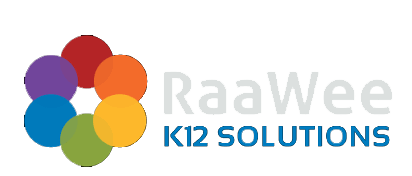
Executive Summary
After more than a year of pandemic living, learning, and working is beginning to subside, schools and districts are rapidly shifting gears in preparation for bringing students and staff back on campus for full-day instruction, athletics, and extracurricular activities. While there is palpable excitement at the prospect of schools opening back up, we are also aware that many students and families will need some extra support getting back into their daily routines, especially those related to in-person attendance. This research report is a forward look into the potential challenges that educators all over the country anticipate will need addressing when school resumes, as well as innovative ideas and strategies to help students readjust to patterns of good attendance and work habits.
RaaWee K12 Solutions is working alongside professionals in the education field to develop real-time responses to positively impact student attendance, offer interventions, and prevent increasing rates of truancy and chronic absenteeism. The report that follows is an in-depth examination of the problems, as well as the solutions we can leverage to foster what’s worked well in this year of growth and opportunity.
Introduction
Attendance Issues At Stake
Though many will return to school in its relatively traditional format, we now must contend with the fact that instruction can be accessed in previously unconventional ways that several parents and students now prefer. It may make things more complicated from an organizational standpoint, but these alternatives should be celebrated as much-needed progress away from the one-size-fits-all educational institutions of the 20th century. If one good thing is rising out of the dust of the pandemic, it’s that our eyes are wider open to new and exciting possibilities for the future of K-12 schooling.
Regardless of the choices that families will soon be making on the horizon of the 2021-22 school year, there is still one non-negotiable: attendance matters. Perhaps more than ever.

The Research Questions
In their proactive approach to capture new ways of measuring and tracking accountability, RaaWee recently reached out to a variety of stakeholders and constituents to explore two key research questions in order to craft tools, communications, and strategies regardless of the educational format or circumstances families choose to avail themselves of going forward.
1
What do you anticipate (or have already experienced) the impact or challenges will be on student attendance when we return to full-time in-person daily instruction (e.g., chronic truancy, tardies, readiness to learn, physical/emotional barriers, breaking bad habits etc.)?
2
What would be helpful interventions, strategies, or tools that would help make the transition back easier on students, families, and staff (e.g., communications, tracking, activities, incentives, etc.)?
Interviews were conducted with several district-level administrators, school site staff, parents, and students to deepen RaaWee’s understanding of attendance related issues different groups of people may be facing now and in the near future, as well as to gather novel ideas to support transitions back to campus.
Parents & Student Voices


School Site Staff Perspectives

While it may seem like a given that classroom teachers make an immense and lasting impact on young people’s growth, development, and ability to reach their goals and potential, but not many have explicitly linked it to the significant influence on student attendance. Liu & Loeb (2019) confirmed: “Overall, we find that teachers have large effects on student attendance. A student would have approximately 44 percent fewer unexcused absences in math classes and 54 percent fewer in English classes, if she had a teacher who is one standard deviation above the average in value added to attendance than if she had an average teacher, holding other variables constant” (p.4). They also noted that, “A teacher who has high value-added to attendance can engage students in class and motivate the student to pursue higher academic goals. Not surprisingly, benefits from these teachers are more salient for students with low prior attendance and low prior achievement” (p.33). This is particularly relevant to the vast research that the student groups who struggle most respond more positively attendance-wise when possessing strong relationships with their teachers.
Trusted by Thousands of Schools Across the Nation
Trusted by Thousands of Schools Across the Nation





















